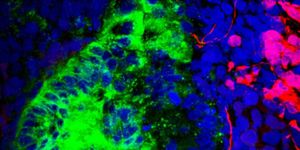Kawasaki disease named after Dr. Tomisaku Kawasaki, a Japanese pediatrician is a rare type of vasculitis or inflammation of the blood vessels. It’s most commonly seen in children aged six months to 5 years. The disease seems to mostly affect children of Asian descent, although the geographic and genetic influences that cause this discrepancy are still not understood.
Concerned parents generally report a red rash on the child's palms, soles, or bodies. Another common symptom is redness of the eyes, called conjunctivitis. Additionally, children may have a red, swollen tongue covered in white marks; a condition called strawberry tongue. Children typically also have a high fever and swollen lymph nodes in the neck.
Some specialists believe the immune system is responsible for this attack on the blood vessels but why is still unknown.
The above video goes into greater detail about this mysterious disease and the associated risks and symptoms.
Sources: Khan Academy








